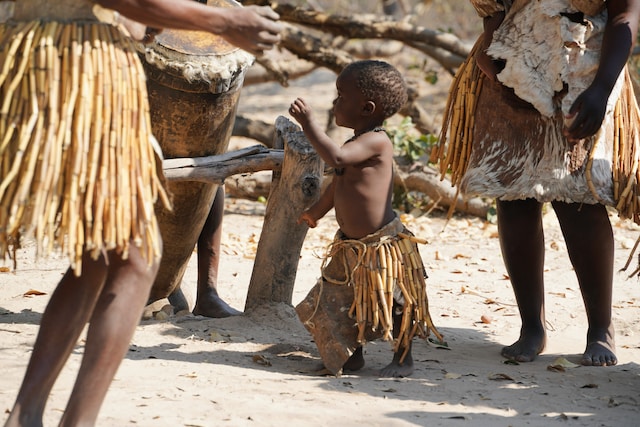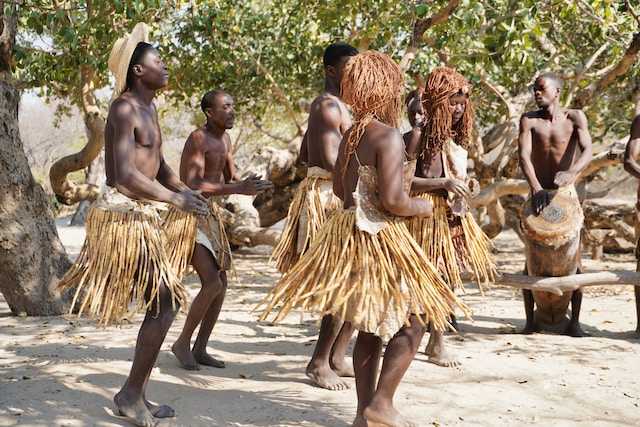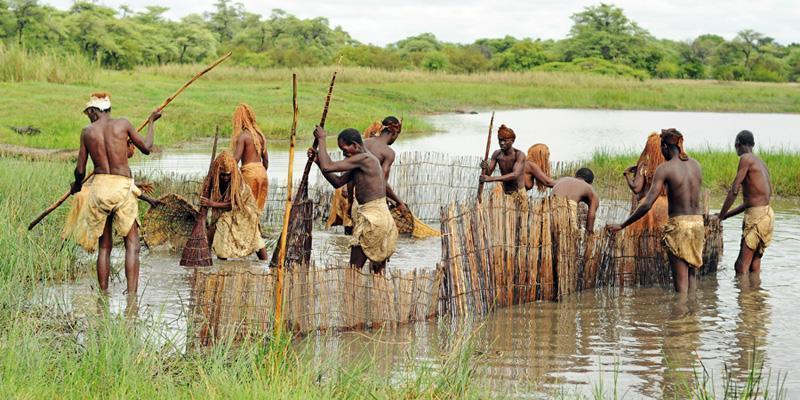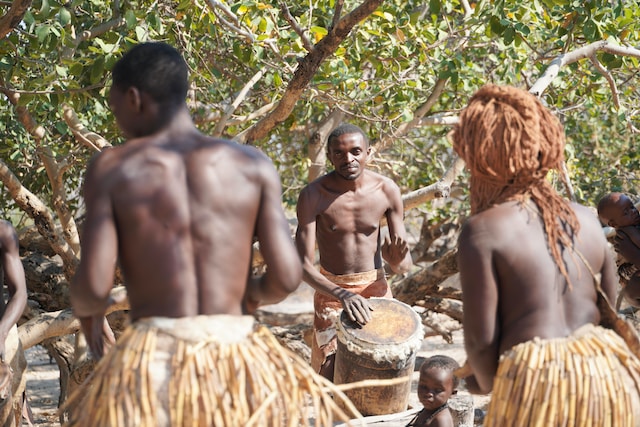Welcome back to our series! We hope you are all enjoying learning about the people that make our country so special. Today we will be learning about another distinct Bantu tribe, the Kavango.
The Okavango River, the lifeline of the Kavango people
The Okavango River, which forms the border between Namibia and Angola for more than 400 kilometres, is the lifeline of the Kavango people. The river serves as a highway for the Kavango people, who use their watus, or canoes, to travel between settlements.
The Kavango people: their origins and culture

The Kavango people are closely related to the Aawambo and originate from the Great Lakes region of East Africa. They migrated south and settled on both sides of the Okavango River. Archaeological excavations suggest that the earliest settlers arrived around the 1600s.
There are significant cultural differences between the five Kavango kingdoms. Each kingdom inhabits its own traditional area and is ruled by a traditional chief or chieftainess, assisted by a council of headmen. The Vakangwali and the Vambunza, the two western-most communities, have similar social practices. The Vashambyu and Vagiriku inhabit the central part, while the Hambukushu is the easternmost area.
The most common language, Rukwangali, is spoken by the Vakwangali and Vambunza. Shishambyu is spoken by the Vashambuyu, and Thimbukushu is spoken by the Hambukushu.
Traditional attire

The Kavango people have a rich traditional culture, which is reflected in their clothing, jewellery, and hairstyles. In the past, men wore only a belt and a small front apron to cover their genital area. The original material was animal skin and was worn both by men and women. Women smeared their bodies with an ointment called rukura, which was made from usivi wood powder and milk fat. Rukura was used for beautification and to protect the skin from the elements.
Women’s hairdos were made of plant fibre (sisal fibre or mugoro tree roots). It was first softened by water and hammering, and then plaited to their own hair by using “a doughy layer” called munde, which consisted of grass, muparara tree powder, and fat. Ostrich shell necklaces were worn mostly as status symbols. The more beautiful objects a man could afford, the more powerful he was. One style of decoration was the shaping of teeth done with an axe. This was done for beauty and to imitate animals. Another custom was scars on the cheeks (Nonsato), which were inflicted to alleviate eye issues and headaches.
The Kavango economy: subsistence farming and fishing
The Kavango people practice a mixture of crop and animal husbandry. Millet, sorghum, and maize beans, as well as pumpkins, are among the plants that are planted. Fish, an important source of protein, is caught for domestic consumption and as a source of income. Traditional methods for fishing include the use of fish weirs, and funnel-shaped baskets are still being used.

Population growth and immigration
Much of the rapid population growth in Kavango has been the result of immigration from Angola. Rundu, the administrative centre of the Kavango East Region, is one of the fastest-growing towns in Namibia and the second-largest town in the country. Nkurenkuru is the administrative centre of West Kavango.
Kavango woodcarvings
The Kavango people are expert woodcarvers. A wide variety of household items such as bowls, spoons, decorative items such as masks, furniture, animals, and exquisitely carved wooden doors Woodcarvings and furniture can be bought from roadside vendors and other outlets around the country.
Interesting Facts
- The Okavango River plays a central role in their lives, providing them with a source of food, water, and transportation.
- Music and Dance: Music is a vital aspect of Kavango culture. Drums, rattles, and traditional instruments like the “molimo” are used in various ceremonies and celebrations. The rhythmic dances are not only entertaining but also hold symbolic meaning.
- Sustainable Agriculture: Their agricultural practices are characterized by a deep understanding of the land. They utilize techniques like crop rotation and intercropping to maintain the fertility of the soil.
Conclusion
In conclusion, the Kavango people’s rich traditions and customs are a testament to their resilience and cultural pride. Through their distinct social structure, spirituality, attire, and unique practices, they continue to thrive and pass on their heritage to future generations, creating a legacy that is both fascinating and inspiring.



